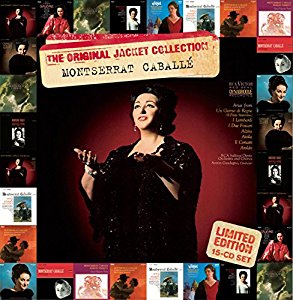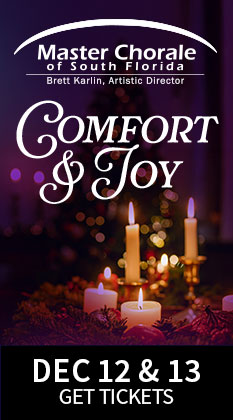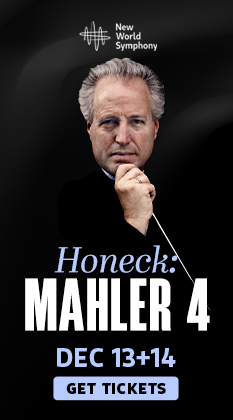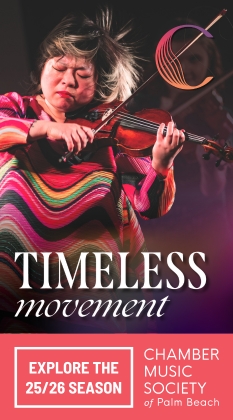A big box for an exquisite vox
Remember Caballé? Remember the LP? If you don’t, now is the time to refresh your memory The lady is celebrating her 75th birthday and Sony/BMG has released a 15-CD box, The Original Jacket Collection, with a selection of her best recordings, packaged in vintage LP covers. Even with some discs offering just 40 minutes of music, at an affordable $89.98, these recordings, made between 1964 and 1972, show the Spanish pa at her absolute peak.
Montserrat Caballé’s sensational overnight success in 1965, replacing an indisposed Marilyn Horne in Donizetti’s Lucrezia Borgia at Carnegie Hall, is the stuff of legend. From then on her career was “B.C.” and “A.C.” Before Carnegie Hall, she was a well appreciated “all-terrain soprano” singing primarily in Bremen, Basel and Barcelona, her hometown. The day after Carnegie, the New York Times quoted “Callas + Tebaldi = Caballé.” The equation was prophetic. Callas gave her final stage performances that year and Caballé boldly proclaimed, “The last ten years were hers, the next ten years will be mine.”
Peter Ustinov used to say that Luciano Pavarotti was “the man who swallowed a Straparius,” and the same could be said of Caballé. Her cello-like voice was a marvel, the gleaming high notes, the superlative musical instincts, the amazing breath control and, especially, the exquisite pianissimos that made her a treasure of a now-bygone era. As an actress and dramatic interpreter, she fared less well, but she was always honest and tasteful.
However, her unique instrument posed some disadvantages. She was often criticized for producing only gorgeous sounds and, after hours of listening, even Caballé can be too much of a good thing. She was also accused of not delving deeply into character and recording excessively. But those were the golden days when a prima donna could afford the luxury of recording everything she wanted to— maybe with that one-of-a-kind instrument it was too much for record producers to resist.
The box includes eight recitals and two complete operas: Bellini´s Norma and Strauss’s Salome. The lack of the complete RCA Lucrezia Borgia with Alfredo Kraus and Shirley Verrett, the Eduardo Toldrá recital from 1963 (her first LP) and the Art of Montserrat Caballé under Gianfranco Masini from 1974 are drawbacks of this edition, even more than her Traviata that could also have been part of the package.
The first CD – Presenting Montserrat Caballe – remains the most impressive. While the plain cover shows a black-and-white sketch of the soprano trying to resemble Callas, inside is an inpidual model of bel canto vocalism with the trademarks that made her justly famous. Highlights include a magnificent Casta pa, as well as the long scene of Bellini´s Il Pirata, Donizetti´s Maria di Rohan and two Carnegie Hall show-stoppers from Lucrezia Borgia and Roberto Devereux.
During the sixties and seventies in America, Norma and Queen Elizabeth were roles mainly associated with Sills and Sutherland respectively; in continental Europe, Caballé was the preeminent choice. With more than one hundred roles in her repertoire, her excursions into bel canto are her real forte. At that time, the fearless glottal attacks and seamless pianissimos were not, as in later years, an excuse to hide declining powers.
The three “rarities” CDs are virtuoso gems. Verdi, Donizetti and the Rossini discs demonstrate – before Bartoli and company – supreme vocal mastery. Rossini´s Willow Song and Ave Maria from Otello are flawless, as is the fiendish D’amore al dolce impero from Armida. The late bel canto, early Verdi and rare Donizetti selections are excellent choices too.
Curiously, the two CDs dedicated to zarzuela arias and duets with her husband, tenor Bernabé Martí, feel too elegant and over- sophisticated, missing the more earthy, genuine touch of Teresa Berganza or Victoria de los Angeles. A similar shortcoming appears in the Granados song recital, which still has its enthralling moments.
Great Operatic Duets lives up to its title from beginning to end. The partnership with Shirley Verrett proved ideal and the two voices complement each other immaculately. Verrett’s feline Amneris, Adalgisa, Jane Seymour, Tancredi, Laura and Suzuki match perfectly with the tonal opulence of Caballé. Most successful in the Great Operatic Heroines disc are the Desdemona scene and Anna Bolena´s Al dolce guidami, which takes the breath away. Less exciting is a mannered Depuis le jour from Charpentier’s Louise, Amelia from Un ballo in maschera and a very slow Tosca that sacrifices drama and dynamics.
Richard Strauss was Caballe’s favorite composer, and she sang Arabella the Marschallin, Ariadne and Salome many times. Her complete recording of the Judean princess is a welcome addition and the voice rings like a bell, effectively achieving the Strauss ideal of an ”Isolde of sixteen years”. She is no competition for big dramatics like Nilsson or Rysanek, but hers is a sincere performance well worth having. The supporting cast is first-rate including Sherrill Milnes in his prime, Regina Resnik, Richard Lewis and James King under Erich Leinsdorf. The Strauss lieder recital is done with remarkable taste and is a work of love, though in the end Caballe isn’t completely in her element.
Joined with the powerhouse Adalgisa of Fiorenza Cossotto, her commercial recording of Norma is remarkable with both of the duets a match made in heaven. Her Casta pa doesn´t equal the live performance in the Theater of Orange– a performance for the ages now on DVD– but lives up to her reputation. The young Domingo and Raimondi are Pollione and Oroveso. Carlo Felix Cillario is the workmanlike conductor. Not a replacement for Callas but definitely one of the two or three best versions.
Caballé remains one of the singing wonders of the last century and this indispensable collection by the greatest Spanish soprano since Victoria de los Angeles is a must for all collectors.
Born in Santa Fe, Argentina, Sebastian Spreng is a visual artist and music reviewer for newspapers and classical magazines, who has resided in Miami since 1987. Music is often present in his work and many of his exhibits have been based on musical series, including Liederkreis I & II, Sinfonietta, Impromptus, Chamber Music, and Reverberations. www.sebastianspreng.net.
Montserrat Caballé as Norma performing Casta pa (Orange, 1974). http://www.youtube.com/watch?v=FIQQv39dcNE
Posted in Uncategorized
5 Responses to “A big box for an exquisite vox”
Leave a Comment
Tue Aug 26, 2008
at 5:55 pm
5 Comments









Posted Aug 27, 2008 at 12:35 am by jorge 176
What a wonderful review, by such a gifted artist. He should share his writings in English on a more regular basis.
Posted Aug 27, 2008 at 6:16 pm by MusicLoverMiami
I love reading anything Sebastian Spreng writes! I look forward to buying this compilation and recommending it to friends.
Posted Aug 28, 2008 at 10:40 pm by Anonymous
Lilliana
Writers are legion!, but writers whose articles capture the attention of the reader and are memorable, are few in mumber.
Sebastian Spreng belongs to this rare breed.
His articles are in a class of their own; truly excellent .
Posted Aug 29, 2008 at 4:48 pm by Michael
Thank you Sebastian for such an insightful review. You’ve inspired me to add this compilation to my collection. I look forward to listening to Caballe’s “cello-like voice.”
Posted Aug 29, 2008 at 7:10 pm by Hernan Carrara
I loved this article. Sebastian Spreng is not also a great visual artist but also an excellent writer.